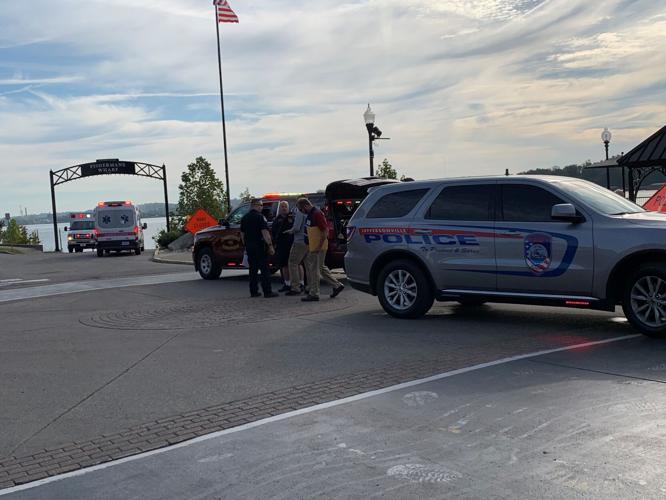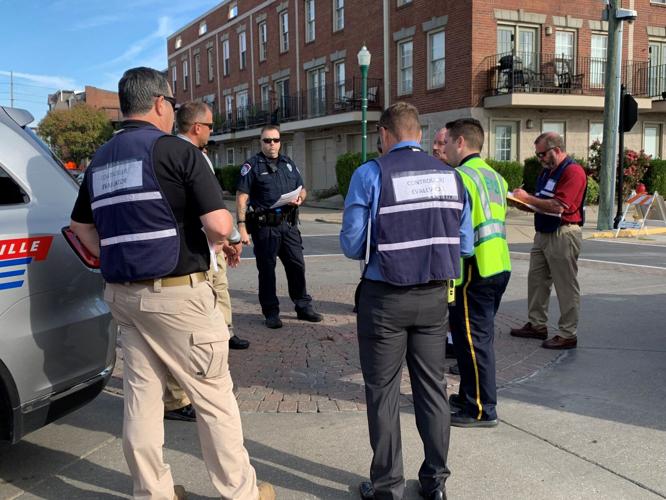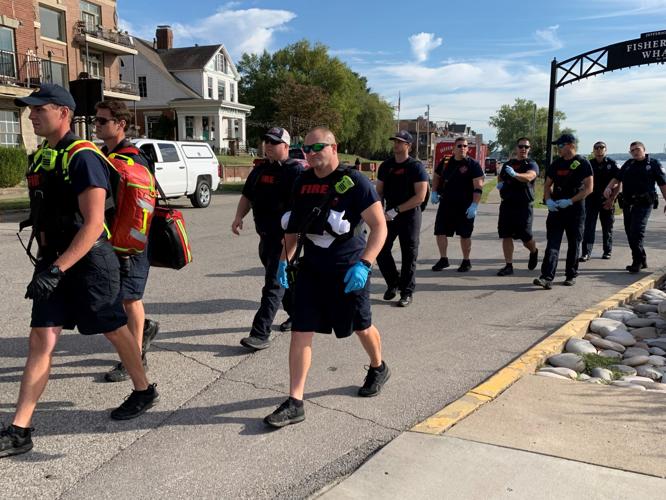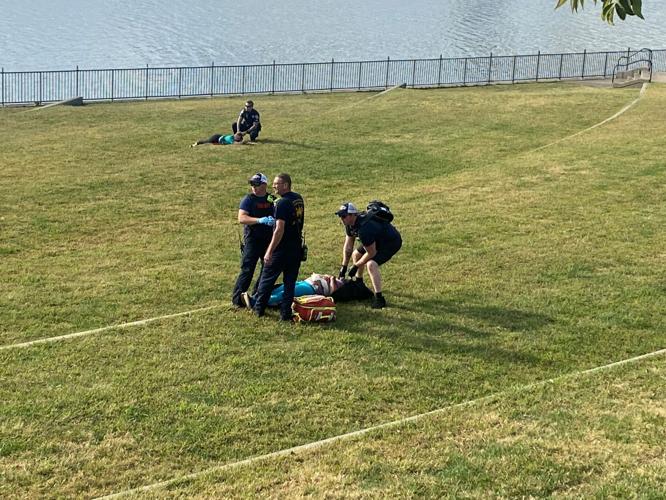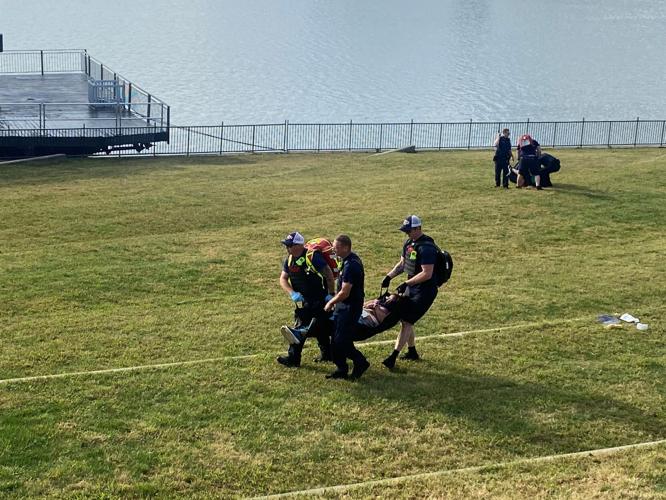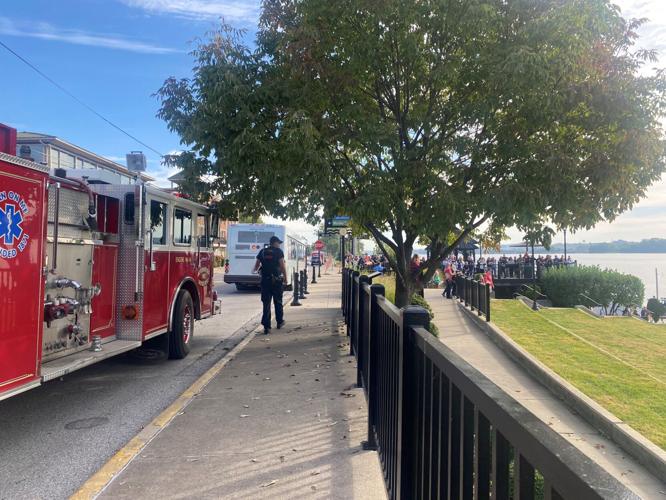LOUISVILLE, Ky. (WDRB) -- People living in parts of Louisville and southern Indiana heard sirens and watched first responders in action Friday morning.
"Operation Thunderstruck" brought together more than 300 police, fire and emergency crews for counter-terrorism training at five sites in Louisville as well as Jeffersonville and Clarksville, Indiana.
In one training scenario, officers walked into an active shooter situation and explosion scene near Jeffersonville's River Stage. At Cardinal Stadium in Louisville, officers also trained for an active shooter. The idea was to prepare for a worst case scenario of an organized terror attack with multiple shooters during Thunder Over Louisville. Actors helped play the part of victims and families looking for loved ones.
The Indiana Department of Homeland Security and Kentucky officials have been working on the exercise for years after getting a federal grant for $2.3 million. Federal officials say the goal is to make sure first responders are ready to tackle the worst of the worst.
"You want to be prepared in the event of something tragic happening. Every year we put on Thunder and we have Derby festivities. I guess you want to prepared but hope you never have to use it," said Jeffersonville Mayor Mike Moore.
"It really comes down to two things. Relationship building between fire and law enforcement and Emergency Medical Services and EMA. We all have to know who each other are. And then, communication and how we communicate here on the scene and afterward," said Indiana State Fire Marshal Joel Thacker.
Training is spread out in the community throughout the day including in a parking lot on Lewis and Clark Parkway in Clarksville, the Jeffersonville Police Department and a government building.
Trainings such as these have become more common over the years but rarely are so many different agencies brought together for one scenario.
"The unfortunate part is its because of all the different situations we've seen across the country," said Louisville director of emergency services Jody Meiman. "The rescue task force, if you think all the way back to Columbine, that was a long time before medical responders were able to get into that building. That was one of the things we focused on was to get them in there to perform life saving measures."
Copyright 2021 WDRB Media. All Rights Reserved.


